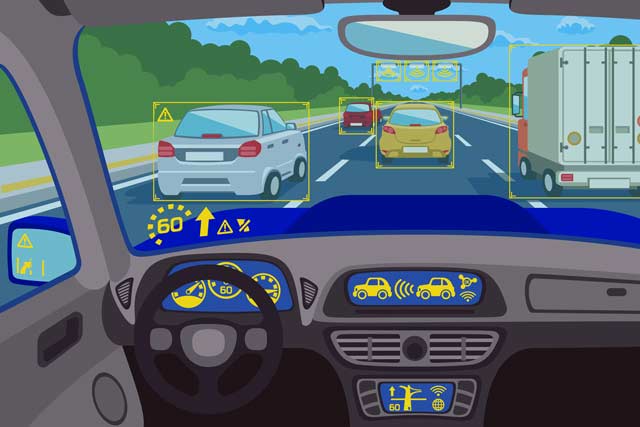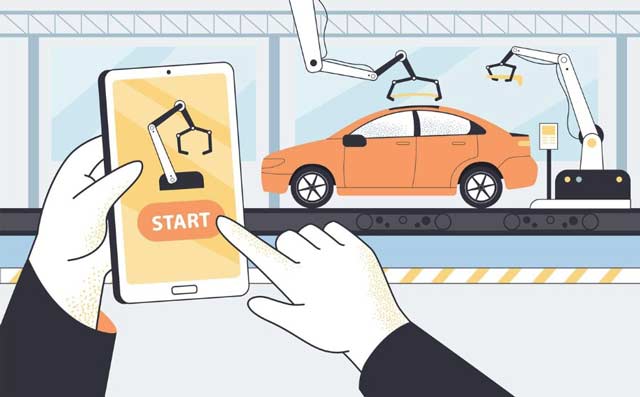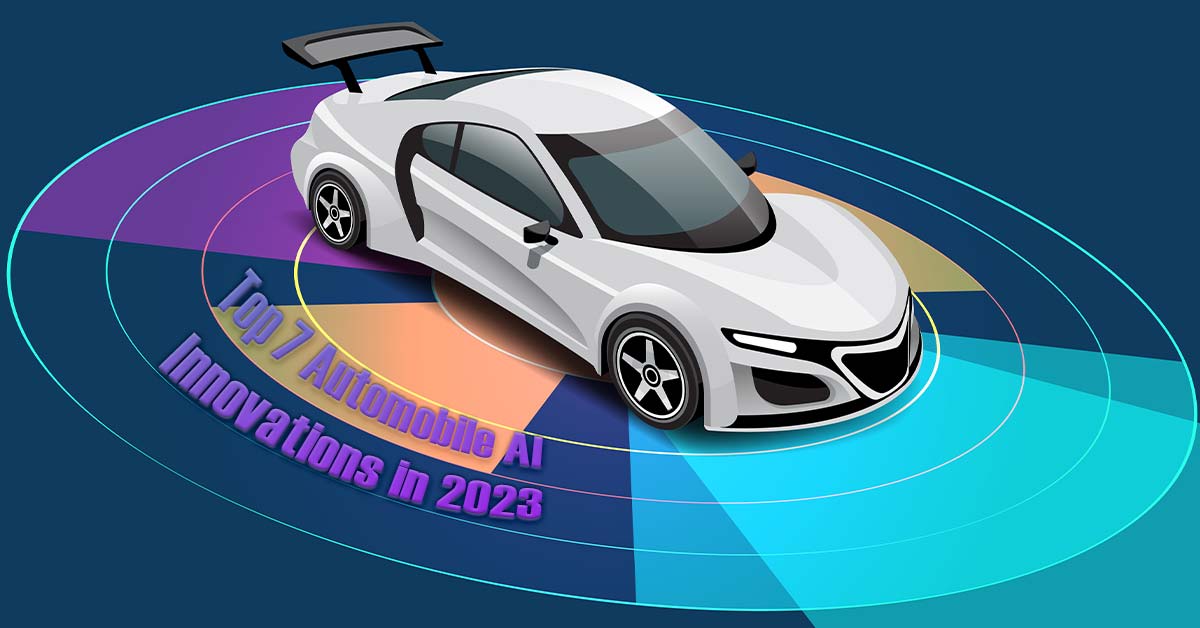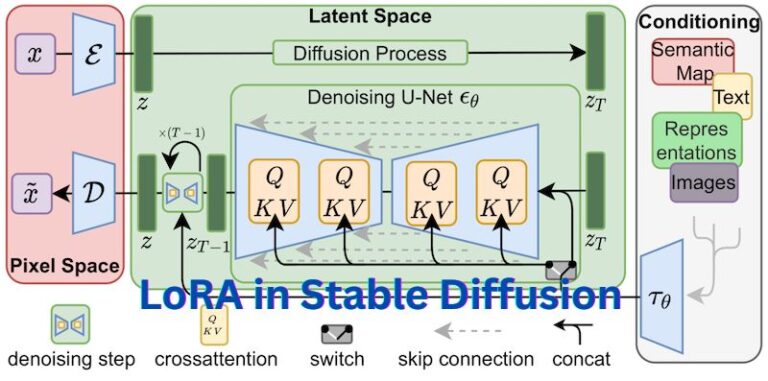Introduction
2023 has been a year of revolution on wheels, driven by the explosive force of Artificial Intelligence. Cars are no longer just metal behemoths, but intelligent companions evolving alongside us. From advanced driver assistance systems navigating highways to AI predicting your need for a pre-warmed car on a chilly morning, these innovations are transforming the very essence of our driving experience. Buckle up, as we explore the top 7 Automobile AI breakthroughs that have fundamentally shaped the automobile industry in 2023 and set the stage for a thrilling future on the road.
Top 7 Automobile AI Innovations
1. Advanced Driver Assistance Systems (ADAS)
- Highway Assist: Cruise effortlessly on long journeys with this AI copilot managing lanes and speed, letting you savor the scenery.
- Emergency Lane Keeping Assist: Your guardian angel on the road, gently nudging you back on track if you drift, preventing potential accidents.
- Traffic Jam Assist: Say goodbye to stop-and-go stress! This system handles city crawls, automatically braking and accelerating for a smoother, relaxed ride.

These AI-powered features are not just techy wonders; they’re safety game-changers:
- Reduced human error: AI anticipates and reacts faster, minimizing the risk of crashes.
- Enhanced comfort and focus: Let go of the constant vigilance, enjoy smoother drives, and arrive refreshed.
- Building a safer future: With AI weaving a safety net around every journey, we’re driving towards a more secure and enjoyable future on the road.
2. Predictive Maintenance and Repair
Goodbye breakdowns, hello peace of mind! AI predicts your car’s needs before they become problems.
No more surprise bills:
- Nissan Leaf e-POWER: Battery AI predicts issues, preventing mid-charge meltdowns.
- Toyota bZ4X: Scans vital signs, catching small problems before they turn big.
- Tesla AI charging system: Optimizes charging for speed and efficiency, boosting EV confidence.
Benefits beyond convenience:
- Enhanced safety: Proactive repairs prevent accidents caused by malfunctioning parts.
- Cost savings: Catching issues early avoids expensive breakdowns and repairs.
- Longer car life: Preventive care keeps your vehicle running smoothly for years to come.
This is just the beginning: Imagine AI predicting tire wear, fuel injector clogs, or even brake pad health. The future of car care is proactive, personalized, and powered by AI.
3. Supply Chain Optimization and Robotics
No more factory mayhem! AI is optimizing car production, tackling those dusty warehouse blues and streamlining the journey from ore to showroom.
Think BMW Munich Plant: Robotic arms waltz to AI’s tune, predicting needs, optimizing logistics, and nipping production hiccups in the bud. No more frantic parts hunts, just smooth sailing.
Across the pond, Tesla’s Fremont Factory grooves to the same beat. Autonomous robots deliver parts flawlessly, while AI whispers efficiency tips to machines, shaving off waste and time. The result? A smooth, speedy ride for everyone.
Beyond speed and cost, AI fuels progress:
- Green car wash: Less waste, lower energy, and cleaner supply chains.
- Safer humans: Robots tackle risky tasks, letting humans focus on higher ground.
- Quality champions: Precise automation means fewer errors, more consistent cars.
Get ready for the future: Self-driving trucks delivering parts, robots collaborating with humans, and predictive maintenance preventing shutdowns. The factory floor is dancing to a new tune, and AI is conducting the orchestra.
4. Enhanced Safety Features
Carmakers are deploying AI as a guardian angel, weaving intelligent systems into vehicles to protect drivers, passengers, and vulnerable road users.
Lexus’ BladeScan High-Beam System: This Automobile AI marvel casts precise beams, illuminating lanes and obstacles without blinding oncoming drivers. Imagine safer nighttime journeys, with light focused where needed and everyone’s vision preserved.
Volvo’s EX90 takes safety to the next level: Its lidar-based AI system acts as an eagle eye, detecting pedestrians, cyclists, and even small animals in darkness, automatically adjusting brakes or steering to avoid collisions. It’s like having a second pair of eyes, always vigilant and ready to react.
These are just glimpses of the AI revolution in car safety:
- Reduced human error: AI reacts faster and more consistently, minimizing the risk of accidents.
- Enhanced night vision: Systems like BladeScan illuminate hazards, creating a safer driving experience for everyone, even in darkness.
- Vulnerable road user protection: AI systems actively protect pedestrians and cyclists, making roads safer for all.
The future of car safety is paved with intelligence. Imagine AI predicting lane departures, adapting braking to weather in real-time, or even monitoring driver drowsiness and suggesting rest breaks. With AI at the wheel, the road ahead is brighter and safer than ever before.
5. Autonomous Driving Advancements
2023 saw significant strides in the quest for self-driving cars. From navigating bustling city streets to tackling highways, autonomous vehicle development continues to accelerate. Here are a few trailblazers:
- Waymo Driverless Taxis: Operating in select US cities, these robo-taxis accumulate real-world data and refine their self-driving algorithms, bringing us closer to a future of autonomous taxi fleets.
- Cruise Origin: This futuristic pod, devoid of steering wheels and pedals, promises a comfortable, shared ride experience, showcasing the potential of autonomous vehicles for urban mobility.
Despite these advancements, challenges remain. Complex traffic scenarios, unexpected weather conditions, and regulatory hurdles necessitate ongoing research and development.
However, the future of self-driving cars looks promising:
- Enhanced safety: Autonomous vehicles could significantly reduce traffic accidents attributed to human error.
- Improved accessibility: Self-driving cars offer independent mobility for those who cannot drive, including the elderly and disabled.
- Transformative urban mobility: Autonomous vehicles could reshape transportation networks, optimizing traffic flow and reducing congestion.
As AI and sensor technology continue to evolve, the road to full autonomy appears clearer than ever. While challenges persist, the potential benefits of self-driving cars are vast, pushing us towards a safer, more accessible, and efficient future on the road.
6. AI-powered Charging Infrastructure for EVs
Efficient charging is the lifeblood of electric vehicle (EV) adoption. AI is stepping up, optimizing systems and transforming the experience.
Systems like Electrify America’s Smart Charging: AI predicts demand, guides drivers to available chargers, and minimizes wait times. No more charging anxiety, just a quick plug-and-go.
Tesla’s Supercharger Network: Its AI-powered dynamic pricing incentivizes off-peak charging, ensuring efficient station use and balancing grid strain. Everyone wins – smoother charging, happier drivers, and a more sustainable future.
The future of EV charging is bright, powered by AI:
- Reduced wait times: Algorithms optimize station usage, slashing queues and frustration.
- Improved accessibility: Dynamic pricing encourages off-peak charging, opening up access for all.
- Smarter grid management: AI balances energy demand, contributing to a sustainable future.
Get ready for AI predicting battery health, suggesting personalized charging schedules, and even recommending nearby amenities while you wait. The road to seamless EV experiences is paved with AI, and it’s electrifying!
7. AI-Powered Personalization and In-Car Experience
Your car: No longer just a machine, but your AI-powered companion. 2023 saw the rise of personalized in-car experiences, where your car learns your habits and tailors the ride to your every whim.

Your Car, Your Co-pilot:
- BMW’s Personal Copilot: Learn your routines and adjust climate, music, even pre-warm the car, turning commutes into comfort capsules.
- Mercedes-Benz MBUX Hyperscreen: A giant, learning brain adapts to your habits, suggesting routes, setting mood lighting, anticipating your needs like a tech-savvy friend.
- Ford SYNC 4: Voice control takes the wheel (figuratively!) for navigation, temperature, and more, keeping your eyes on the road and hands free.
Personalization isn’t just fancy gadgets; it’s about safety and comfort:
- Reduced distractions: Voice control and automatic adjustments minimize risky fumbling with buttons.
- Enhanced comfort: Your car becomes a haven, perfectly tailored to your preferences, reducing stress and fatigue.
- Safer journeys: Anticipating needs and adapting the environment can prevent potentially dangerous situations.
This is just the beginning: Imagine cars adjusting aromas to match your mood, curating news to your interests, or suggesting scenic detours based on your preferences. AI is transforming our cars into intelligent companions, making every drive a personal, safe, and enjoyable experience.
More on AI in Cars: A Deeper Dive
Gesture Control and Augmented Reality (AR)
- BMW iX Flow: Boasts an E Ink exterior that can change colors on demand, and automobile AI-powered gesture recognition allows drivers to adjust the color pattern with hand gestures.
- Mercedes-Benz Vision EQXX: Features an AR head-up display that overlays driving information and warnings onto the real world view, enhancing situational awareness.
Immersive In-Car Experiences: From color-shifting exteriors to holographic assistants, cars become interactive spaces that entertain, inform, and personalize your journey.
Autonomous Driving Advancements
- Waymo Driverless Taxis: These self-driving taxis in Phoenix, Arizona utilize advanced AI algorithms and sensor technology to navigate city streets and offer autonomous rides to passengers.
Text-to-Video Tools for Design and Marketing
- Hyundai SEVEN Concept: Designed with Runway’s Gen-2 text-to-video platform, allowing rapid visualization and iteration of concept car designs based on written descriptions. This streamlines the design process.
- Genesis X Concept: Used AI-powered design tools to create realistic 3D models and animations, showcasing future styling direction and features before physical prototypes are even built.
Conclusion
2023 saw AI ignite the automotive engine. From self-driving strides to interactive cockpits, AI transformed cars from machines to intelligent companions. Optimize supply chains, dance with robots in factories, and drive safer with AI’s guiding hand. But the future holds more: predictive maintenance, hyper-personalized drives, and smart city integration. Challenges arise – ethical hurdles, trust through explainability, and evolving regulations. Will we surrender the wheel, or forge a partnership with AI? The story starts in 2023, but the ending, the shape of driving’s future, is ours to write.







